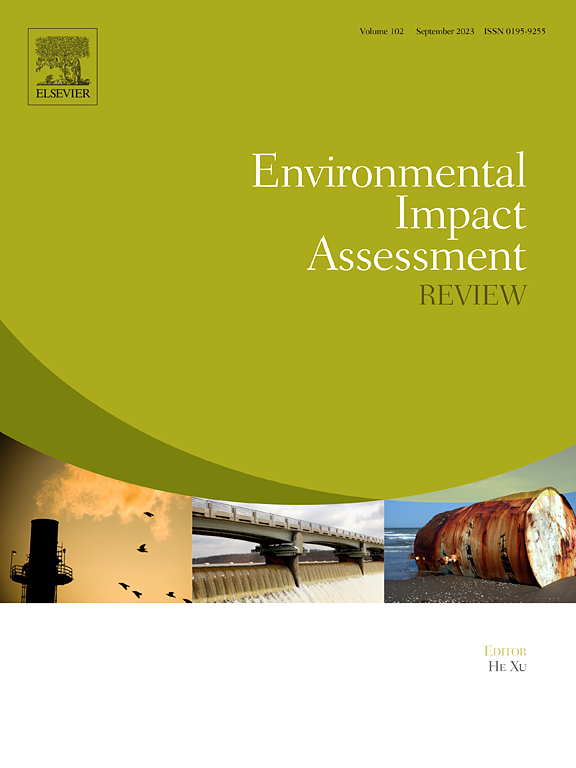超越一刀切:长江经济带融合混合方法的差别化绿色发展评估
IF 9.8
1区 社会学
Q1 ENVIRONMENTAL STUDIES
引用次数: 0
摘要
评估绿色发展对全球可持续性进展至关重要,但现有方法往往使用固定指标,忽视了区域差异和复杂性。为了解决这个问题,我们开发了一个与可解释机器学习(ML)模型相结合的特定环境指标系统,以平衡适应性和效率。使用2016-2020年长江经济带130个城市的数据进行验证。结果显示,自2016年以来,整体绿色发展显著改善,不同城市类型有所不同。随机森林模型具有较高的预测精度(R2 = 0.75 ~ 0.91, MSE = 1.91 ~ 5.77),其中SHapley加性解释(SHapley Additive exPlanations, SHAP)分析强调农村收入(|SHAP| = 1.65)、第三产业比(|SHAP| = 1.48)、草地覆盖度(|SHAP| = 1.38)、保护区(|SHAP| = 0.81)和废弃物利用率(|SHAP| = 0.80)是关键驱动因素。政策含义包括包容性发展、创新驱动型产业转型、采用循环经济和生态保护。虽然存在时空限制,但本研究证实了机器学习在复杂可持续性评估中的潜力,为决策者提供了一个数据驱动的工具包,以提高区域干预的效率和有效性。本文章由计算机程序翻译,如有差异,请以英文原文为准。

Beyond one-size-fits-all: Differentiated green development assessment integrating a hybrid approach in China's Yangtze River Economic Belt
Assessing green development is critical for global sustainability progress, yet existing approaches often use fixed indicators that overlook regional variations and complexities. To address this, we developed a context-specific indicator system integrated with interpretable machine learning (ML) models to balance adaptability and efficiency. Validated using 2016–2020 data from 130 Yangtze River Economic Belt cities. The results reveals notable improvements in the overall green development since 2016, with variations across city types. Random forest models exhibited high prediction accuracy (R2 = 0.75–0.91, MSE = 1.91–5.77), with SHapley Additive exPlanations (SHAP) analysis highlighting rural income (|SHAP| = 1.65), tertiary industry ratio (|SHAP| = 1.48), grassland coverage (|SHAP| = 1.38), protection areas (|SHAP| = 0.81), and waste utilization (|SHAP| = 0.80) as pivotal drivers. The policy implications include inclusive development, innovation-driven industrial transformation, circular economy adoption, and ecological conservation. While temporal-spatial limitations exist, this study confirms ML's potential for complex sustainability assessment, offering decision-makers a data-driven toolkit to enhance regional intervention efficiency and effectiveness.
求助全文
通过发布文献求助,成功后即可免费获取论文全文。
去求助
来源期刊

Environmental Impact Assessment Review
ENVIRONMENTAL STUDIES-
CiteScore
12.60
自引率
10.10%
发文量
200
审稿时长
33 days
期刊介绍:
Environmental Impact Assessment Review is an interdisciplinary journal that serves a global audience of practitioners, policymakers, and academics involved in assessing the environmental impact of policies, projects, processes, and products. The journal focuses on innovative theory and practice in environmental impact assessment (EIA). Papers are expected to present innovative ideas, be topical, and coherent. The journal emphasizes concepts, methods, techniques, approaches, and systems related to EIA theory and practice.
 求助内容:
求助内容: 应助结果提醒方式:
应助结果提醒方式:


